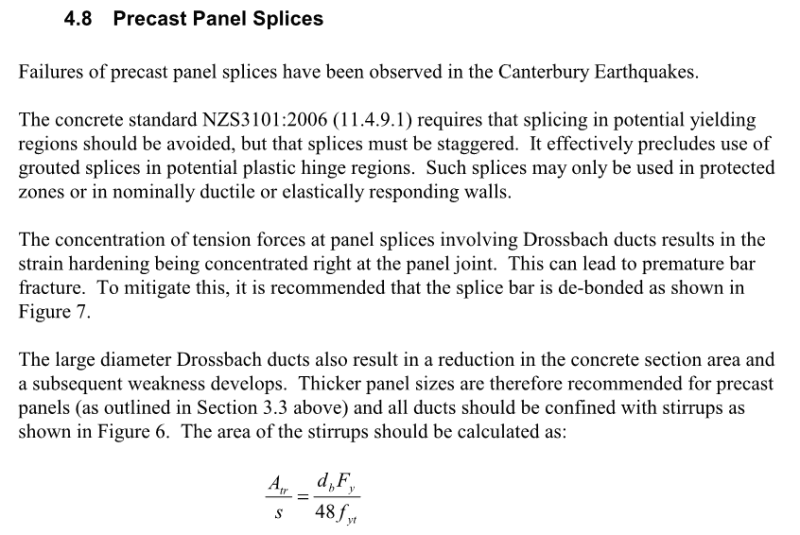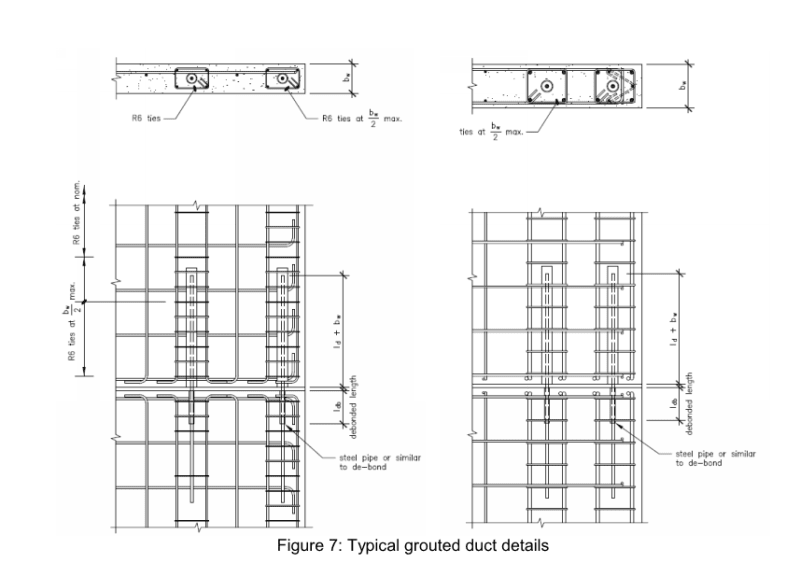li0ngalahad
Structural
Hi
I am a bit puzzled about clause 17.7.5 on the AS3600-2019 code and I was wondering if anyone can shedsome light on it.
17.7.5 Grouted ducts to joints
Grouted ducts used to join prefabricated elements shall be fully confined using Ductility
Class N reinforcement anchored perpendicular to the duct in accordance with Section 11.
As usual, AS3600 is vaugue and unclear, and prone to be misinterpreted, especially without a commentary. It's quite ridiculous really, especially when you compare it to ACI or EC2. I was disappointed to see that the Amendment 2 Draft shows nothing about this clause.
Anyway, my questions are :
1) How do I design this "full confinement in accordance with Seciton 11"? Section 11 does not talk about full confinement as far as I know??
2) What does "perpendicular" to the duct mean? In a precast wall, horizontal reinforcement is anchored perpendicular to the duct, however I don't see that doing much in terms of confinement.
3) Do we really need to detail this even if my structure is designed with ductility 1? And if so what is the reasoning behind this? As long as my lap is in accrodance with AS3600, and I assume ductility 1, I would think such painful detail can be waived??
I have found a document from the NZ commission on the 2011 Canterbury earthquakes that talks about this, with a lo more info in terms of detailing and calculations. I wonder if anyone here is using the same formula and detail?


I am a bit puzzled about clause 17.7.5 on the AS3600-2019 code and I was wondering if anyone can shedsome light on it.
17.7.5 Grouted ducts to joints
Grouted ducts used to join prefabricated elements shall be fully confined using Ductility
Class N reinforcement anchored perpendicular to the duct in accordance with Section 11.
As usual, AS3600 is vaugue and unclear, and prone to be misinterpreted, especially without a commentary. It's quite ridiculous really, especially when you compare it to ACI or EC2. I was disappointed to see that the Amendment 2 Draft shows nothing about this clause.
Anyway, my questions are :
1) How do I design this "full confinement in accordance with Seciton 11"? Section 11 does not talk about full confinement as far as I know??
2) What does "perpendicular" to the duct mean? In a precast wall, horizontal reinforcement is anchored perpendicular to the duct, however I don't see that doing much in terms of confinement.
3) Do we really need to detail this even if my structure is designed with ductility 1? And if so what is the reasoning behind this? As long as my lap is in accrodance with AS3600, and I assume ductility 1, I would think such painful detail can be waived??
I have found a document from the NZ commission on the 2011 Canterbury earthquakes that talks about this, with a lo more info in terms of detailing and calculations. I wonder if anyone here is using the same formula and detail?


